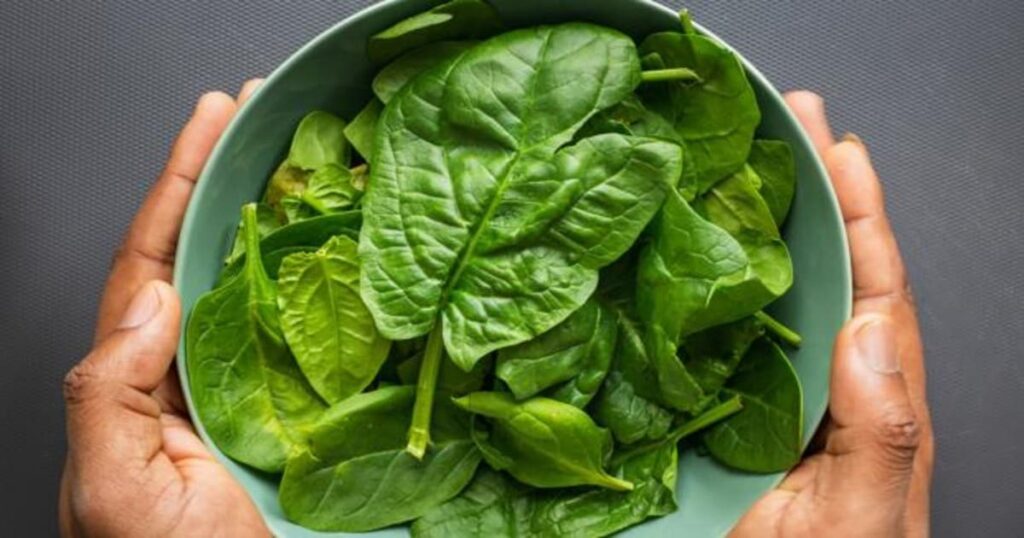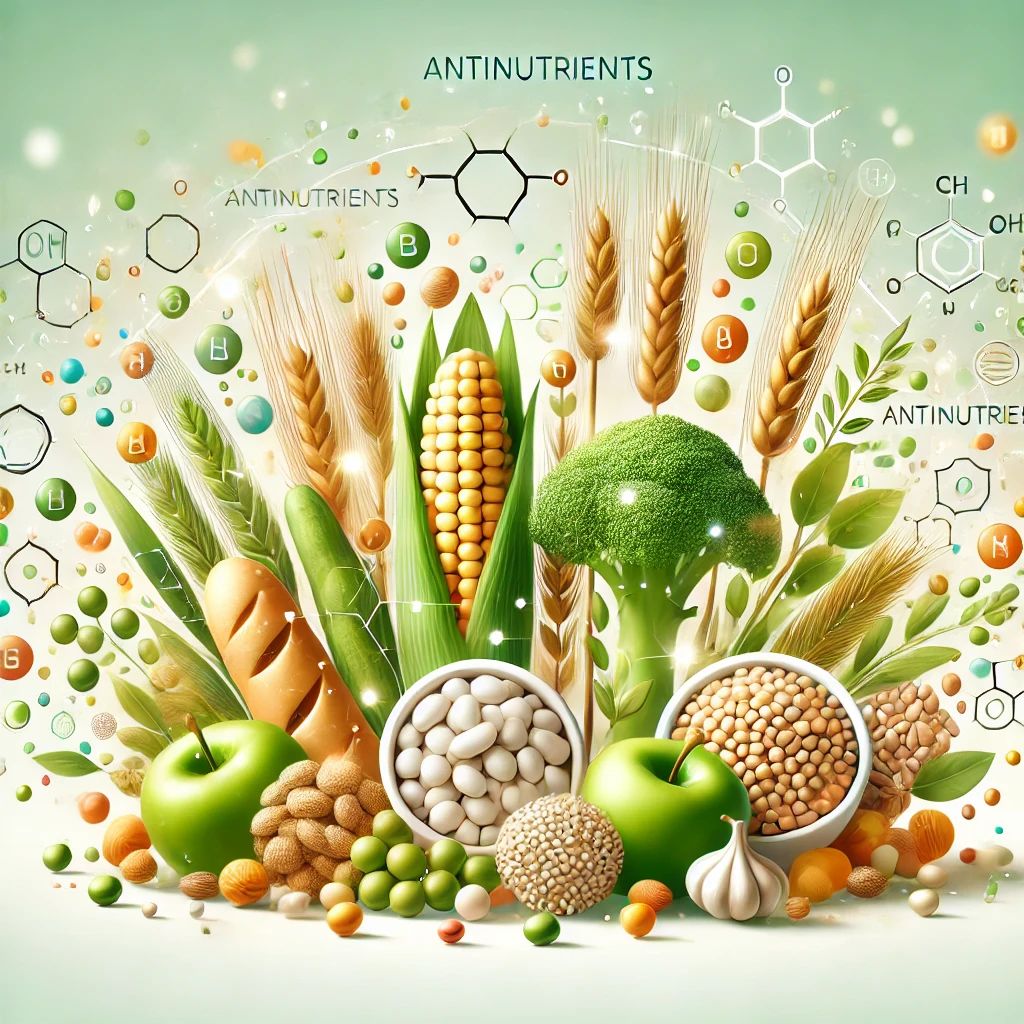In the world of nutrition and healthy eating, the term "anti-nutrients" has attracted increasing interest. These compounds, present in many natural and healthy foods, have the ability to interfere with the absorption of essential nutrients in our bodies. Although it sounds alarming, understanding what they are, how they work and how we can reduce their effects allows us to enjoy a balanced and varied diet without giving up the foods that contain them.
Main anti-nutrients in food
PhytatesPhytates, or phytic acid, are found in high concentrations in whole grains, legumes, seeds and nuts. These compounds bind to minerals such as iron, zinc, calcium and magnesium, forming insoluble complexes that our bodies cannot absorb. This can be of particular concern in plant-based diets where grains and legumes are key sources of minerals.
Oxalates: Present in green leafy vegetables such as spinach, beetroot and rhubarb, oxalates can bind calcium, forming calcium oxalate. This compound is not only difficult to absorb, but can also contribute to the formation of kidney stones in susceptible individuals.
TanninsTannins are phenolic compounds found in tea, coffee, red wine and some fruits such as grapes and persimmons. These compounds can reduce the absorption of non-heme iron, the type of iron found in plant foods, by forming insoluble complexes with this mineral in the intestine.
Protease inhibitorsThese anti-nutrients, found in raw legumes such as soya and beans, interfere with the action of digestive enzymes responsible for protein breakdown, such as trypsin. This can lead to inadequate protein digestion and, consequently, reduced absorption of essential amino acids.
LectinsLectins are proteins found in legumes, grains and some vegetables. They can stick to the walls of the intestinal tract, interfering with nutrient absorption and, in some cases, causing intestinal irritation and digestive problems.

Health effects and strategies to counteract them
Although anti-nutrients may reduce the bioavailability of certain nutrients, it is important to remember that they are not entirely negative. In fact, some studies suggest that these compounds may offer health benefits, such as antioxidant properties and protective effects against certain chronic diseases. However, it is essential to know how to minimise their negative effects to ensure a nutrient-rich diet.
Soaking and cooking: Prolonged soaking of pulses, seeds and grains before cooking is an effective strategy to significantly reduce the content of phytates, oxalates and protease inhibitors. Heat during cooking also helps inactivate these anti-nutrients, improving digestibility and nutrient absorption.
FermentationTraditional processes such as fermentation not only improve the taste and texture of foods, but also reduce levels of anti-nutrients. For example, tempeh and miso, both fermented soy products, contain much lower levels of phytates and lectins than non-fermented soy.
Food combiningTo improve mineral absorption, it is advisable to combine foods rich in anti-nutrients with those that increase the bioavailability of these nutrients. For example, consuming foods rich in vitamin C, such as peppers or citrus fruits, along with legumes or whole grains, can significantly improve the absorption of non-heme iron.
SteamingSteaming leafy green vegetables is an effective way to reduce oxalate levels without losing valuable nutrients that can dissolve in the cooking water. This facilitates better absorption of calcium and other minerals.
Healthy recipes to counteract antinutrients
Below are two recipes that use anti-nutrient-rich foods, along with cooking techniques and food combinations that help minimise their impact and improve nutrient absorption.
Spinach salad with lemon vinaigrette and pumpkin seed vinaigrette

| Ingredients: | Preparation: |
| 2 cups fresh spinach 1/4 cup roasted pumpkin seeds (soaked beforehand) 1/2 cup cooked chickpeas 1 tomato, sliced 1/4 cup chopped red peppers Juice of 1 lemon 2 tablespoons olive oil Salt and pepper to taste | Soaking of seedsSoak pumpkin seeds in water for at least 8 hours, then rinse and toast them lightly in a pan without oil to reduce the phytate content. Cooking the chickpeasCook the chickpeas after soaking them for 12 hours, which helps to reduce the protease inhibitors. Salad preparationMix the spinach, chickpeas, tomato slices and peppers in a large bowl. VinaigretteCombine lemon juice, olive oil, salt and pepper. The acid in the lemon not only adds flavour, but also improves the absorption of the iron in the spinach. CompletionAdd the toasted pumpkin seeds and stir to combine all the ingredients. |
Benefits: This salad is rich in non-heme iron from the spinach and chickpeas, while the lemon juice helps counteract the effects of oxalates in the spinach and phytates in the pumpkin seeds.
Stir-fried tempeh with vegetables and ginger sauce

| Ingredients: | Preparation: |
| 200 g tempeh cut into strips 1 julienned carrot 1/2 red pepper strips 1/2 green pepper strips 1 cup broccoli 1 tablespoon grated fresh ginger 2 tablespoons low-sodium soy sauce 1 tablespoon sesame oil 1 clove garlic, minced 1 teaspoon honey (optional) | Preparation of tempehTempeh, being fermented, has reduced levels of anti-nutrients. Cut the tempeh into strips and, if you prefer, steam it for 5 minutes to soften its texture before sautéing. Vegetable stir-fryIn a large frying pan, heat the sesame oil and add the garlic and ginger. Then add the vegetables and sauté for 5-7 minutes until crisp-tender. Cooking tempehAdd the tempeh strips to the pan and sauté together with the vegetables. Add the soy sauce and, if desired, a teaspoon of honey to balance the flavours. Serve: Serve hot, accompanied with brown rice for a complete meal. |
BenefitsThis recipe is an excellent source of high quality vegetable protein, thanks to fermented tempeh, which significantly reduces phytates and lectins present in soybeans. The quick sautéing of the vegetables maintains their nutritional value, while the combination with ginger and soy sauce adds delicious flavour and additional digestion benefits.
Anti-nutrients, although present in many nutritious foods, should not be a cause for concern if proper cooking practices are adopted and foods are combined intelligently. With a focus on proper cooking, fermentation and food combining, we can enjoy a nutrient-rich diet while maintaining the diversity and balance necessary for good health. Incorporating recipes that take these factors into account is an excellent way to optimise nutrient absorption and enjoy the full benefits of a healthy and varied diet.








